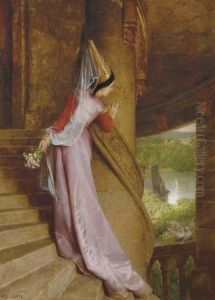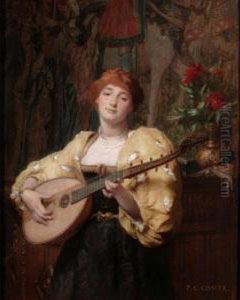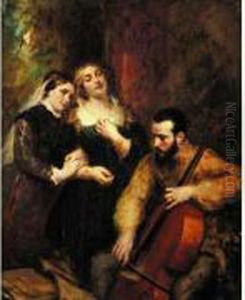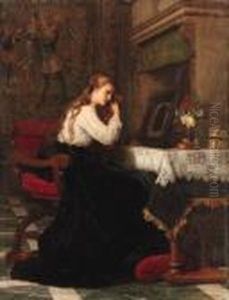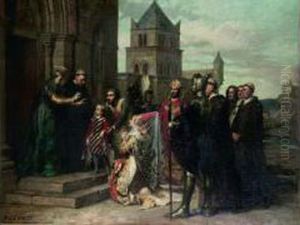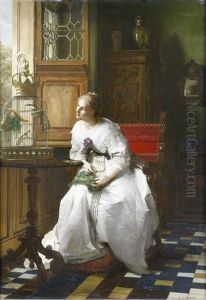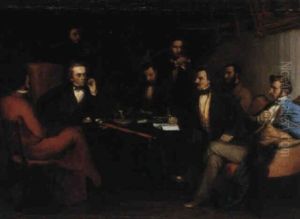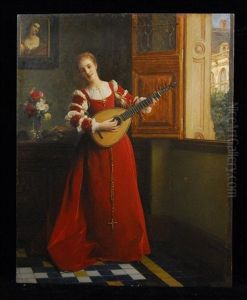Pierre Charles Comte Paintings
Pierre Charles Comte was a notable 19th-century French painter, born on November 15, 1823, in Lyon, France. He was recognized for his contributions to genre painting, a style that depicts scenes of everyday life with an emphasis on domestic and popular settings.
Comte received his initial artistic training in his hometown of Lyon before moving to Paris to further his studies. He entered the prestigious École des Beaux-Arts, where he studied under the guidance of influential artists such as Léon Cogniet and Michel Martin Drolling. Comte's education at this leading French institution equipped him with the technical skills and classical foundation that would be evident in his later works.
Throughout his career, Comte exhibited a profound interest in historical accuracy and detail, often spending considerable time researching for his paintings. His works often featured elements from the 18th century, including fashion and interior design, which he rendered with meticulous attention to detail.
Comte first gained recognition at the Salon, the official art exhibition of the Académie des Beaux-Arts in Paris. His debut at the Salon was in 1847, and he continued to exhibit there regularly, winning several medals for his work. His paintings were well-received by critics and the public alike, earning him a reputation as a skilled genre painter.
One of Comte's notable works includes 'The Fiancée's Visit', which showcases his ability to capture the nuances of social interactions and the subtleties of period attire. Other notable paintings include 'The Little Gourmet' and 'The Broken Mirror', both of which demonstrate his talent for storytelling through art.
In addition to his painting, Comte was also an accomplished illustrator, contributing to various publications of the time. His illustrations further underline his commitment to depicting the social customs and fashions of his era.
Pierre Charles Comte's impact on genre painting was significant during his lifetime, and his works are still appreciated today for their historical value and artistic merit. He passed away on August 27, 1895, in Paris, leaving behind a legacy of detailed and evocative representations of 19th-century French life.










